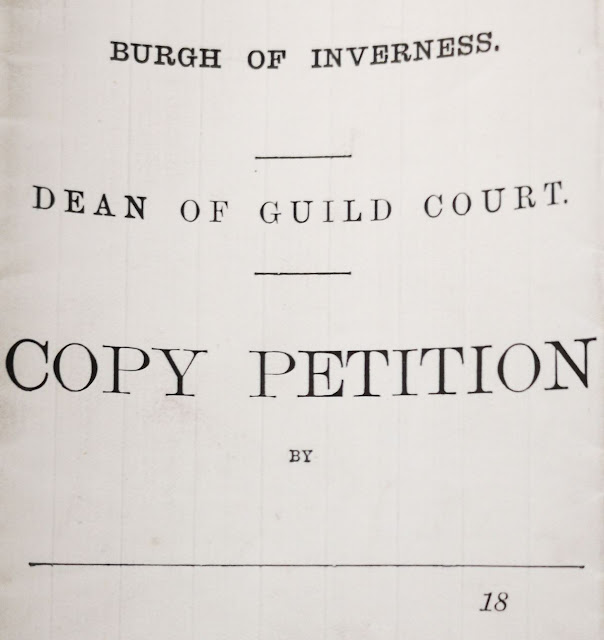1898 Guild Court Petition
This represents an exciting discovery, made during my archives visit, and is the existence of a Guild Court Petition regarding the approval to use land to the east of the original distillery site. This allowed the much needed expansion of Glen Mhor, allowing a sizeable increase with the building of several new warehouses that would back onto the football ground.
The petition itself confirms a disagreement between Mackinlay & Birnie and Sir K.J. Matheson; the landowner. We've discussed this laird previously when documenting the original 1893 distillery plans. A very wealthy individual, Sir Matheson owned huge areas of Scotland and particularly around Inverness. It would suggest that there was no formal agreement in place (other than a gentleman's agreement) when the distillery was initially established in 1893. No suggestion, that if Glen Mhor was successful, it would be able to expand with new buildings beyond the vision of the original plans. Also, appearing against the building of these warehouses, were the owners of the Caledonian Canal. Both parties against would have their representatives present for the hearing.
This deal was presented on 20th October 1898, just 4 years or after Glen Mhor began production. A representative appeared by warrant to the court, 4 days later at noon to discuss the proposal before the court. The plan being presented was for a Duty Free Warehouse with a cost of £573. In today's money, this represents roughly £80k. A good deal for warehouses that would last almost century, and would have lasted much longer, if it wasn't for the cuts of 1983 across the industry.
But what of Sir Kenneth? A man and family that arguably were used to getting their own way in such matters? Possibly they were being difficult, although their disapproval again had more practical means. They retained ownership of the land to the east of the distillery; the land that would be impacted the most by any building along that eastern boundary. As far as I know, this land was rural, it would sometime in the 1890s, become known as Caledonia Park and play host to the local football team. As such, the land and its value might be impacted by a block of stone warehousing that formed a boundary between the park and the canal. A boundary that meant Mackinlay & Birnie were not interested in buying any neighbouring land?
As for the 1898 warehouses that formed the central disagreement of this court meeting, we will be discussing these in greater detail in a future post.




Comments
Post a Comment